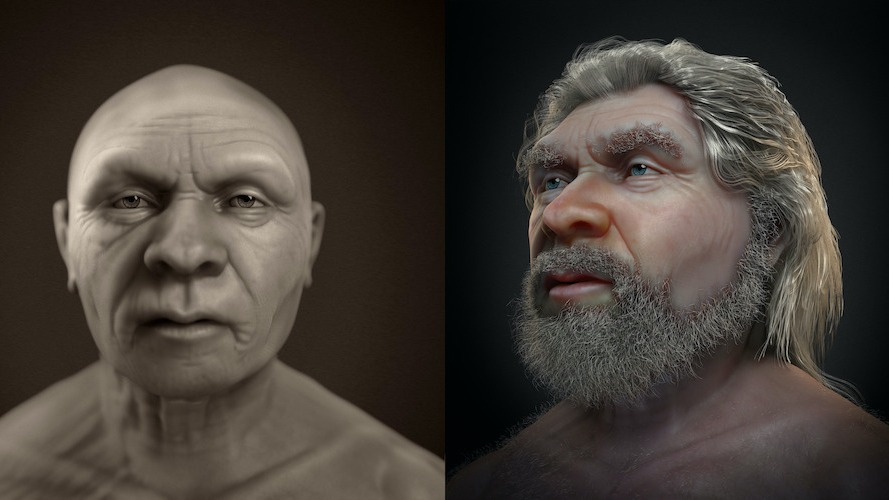
In 1908, a group of Catholic priests discovered what looked like the skeletal remains of a man buried inside a cave in La Chapelle-aux-Saints, a commune in south-central France. The nearly complete skeleton lacked several teeth, earning him the nickname the "old man."
However, further investigation by scientists revealed that the skeleton wasn't a modern human (Homo sapiens) but rather a Neanderthal, a close relative that went extinct approximately 40,000 years ago.
The skeleton had many hallmark traits of a Neanderthal, including an oversize brow ridge, a flat cranial base and large eye orbits, according to eFossils.com, a site run by the University of Texas at Austin’s Department of Anthropology.
Now, 115 years later, forensic artists have created a digital facial approximation of the Neanderthal, who lived to be about 40 years old, offering a glimpse of what he may have looked like when he lived sometime between 47,000 and 56,000 years ago, according to a new facial approximation that researchers unveiled at a conference presented by the Italian Ministry of Culture in October.
Related: Facial reconstructions help the past come alive. But are they accurate?
For the facial approximation, a forensic artist used existing computed tomography (CT) scans of the skull and then imported measurements along the Frankfort horizontal plane (a line that passes from the bottom of the eye socket to the top of the ear opening) based on a human skull pulled from a database of donors. This gave researchers the necessary framework to generate the face shape.
Next, artists used soft-tissue thickness markers in living human donors to digitally build the "old man's" skin and muscles. They then enhanced the approximation to make it more lifelike by adding details such as color to the skin and hair. It wasn't clear from the research whether these colors were based on a DNA analysis or an educated guess.
"We generated two images, one more objective with just the bust in sepia tone without hair and another more speculative [and] colorful with a beard and hair," study co-author Cícero Moraes, a Brazilian graphics expert, told Live Science in an email. "This image shows how Neanderthals were similar to us, but at the same time they were different, with more obvious peculiarities such as the absence of a chin, for example. Even so, it is impossible not to look at the image and try to imagine what that individual's life was like, thousands of years ago."
While this isn't the first time that artists have attempted to create a facial approximation of this Neanderthal, it's novel in that researchers used CT scan data to make the image.
Previous (inaccurate) reconstructions have looked exaggeratedly ape-like, such as a 1909 drawing by Czech painter František Kupka and a hunched-over skeleton created by French paleontologist and anthropologist Marcellin Boule, according to Linda Hall Library, an independent science research library in Kansas City, Missouri.
Having the CT scan's digital measurements readily available helped inform the new research team's accuracy and provided new insight into one of modern humans' relatives.
"If one carefully observes the approximations offered over the years, spanning almost over one century, it can be seen how the facial traits of this Neanderthal man have been softened and 'humanized,' abandoning a more brutal perception or interpretation of it, which characterized the idea past anthropologists once had of Neanderthals," study co-author Francesco Galassi, an associate professor of physical anthropology at the University of Lodz in Poland, told Live Science in an email. For instance, in recent decades, research has shown that Neanderthals buried their dead, made tools, used fire to cook food and may have even had ritual practices.
He added, "This change in perception can certainly be attributed to numerous advances in the study of Neanderthals that have shown how they were much closer in anatomy — hence likely in physiology — to us, the anatomically modern Homo sapiens. Our reconstruction offers a new perspective on this ancient man and reflects on this evolving notion."







